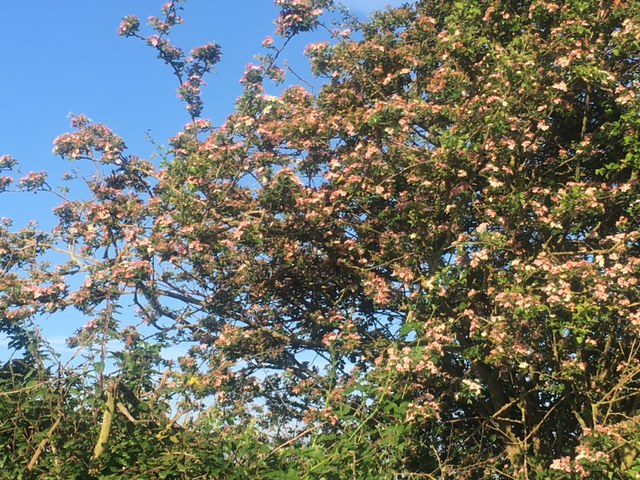
Last week I revisited ‘my’ two Breeding Bird Survey squares to carry out the second surveys at each to complete the data collection for 2021. BBS1, as I shall call it, is arable farmland and I have now completed 17 years of surveying it for the national scheme, and BBS2 is mostly farmland by the River Nene but starts and ends in a village of stone cottages.
Usually most of the Hawthorn blossom has gone over by my second visits, but in this late spring a lot of it was at that delightful raspberry ripple stage where the petals turn from white to pink before being scattered by the breezes.
Over the 17 years at BBS1 I have seen 56 species altogether, of which the ‘best’ was a Montagu’s Harrier in 2007 (that seems a long time ago!), and this year’s total was a pretty average 28 species which included on Visit 1 the first Kestrel over that long period. But the BBS is designed to allow us, when thousands of squares are combined for analysis, to see what happens to common widespread species from year to year and decade to decade. In my window onto bird population changes, 2021 was the best year ever for Stock Dove (6 individuals), Woodpigeon (32), Green Woodpecker (4), Jay (2) and Great Tit (7), and the Cuckoo on the first visit was only the fifth year ‘ever’ here for me. On the debit side, I haven’t recorded a Reed Bunting since 2014 and three of the last five years, including this year, have been blanks for Yellow Wagtails. But for all I know, another nearby survey square in Cambs, Northants or Beds may have had their best years ever for those species – the power is in the accumulated data, not in mine alone.
At BBS2, I have now completed 10 years of surveys but another observer covered it in earlier years. Between us we have recorded 66 species with this year’s species list being a fairly standard 45 species, of which two were new for this year, Oystercatcher and Sparrowhawk. The Sparrowhawk almost flew into me as she was chased by a male Blackbird up a narrow hedged path. Not many record-breaking counts here: Mallard (4 individuals), Moorhen (5) and Jackdaw (23). And no Reed Buntings on this site in the last couple of years.
Four pleasant early mornings spent wandering with a purpose and a piece of paper and a pen (and a spare one). I reckon I could do both squares, at a pinch, without binoculars because many of the birds are either very easy to identify with the naked eye even at a distance, or are heard. But I take my binoculars in case another Montagu’s Harrier flies past but also because I stop and look, as well as walk and count.
But one has moments too. There is a tree on BBS2, a fine tall tree, that is right by the path and often, these days, has a Red Kite perched in it. Depending on where in the tree it is sitting, I have to decide whether it is in the closest distance band (0-25m) or the next one out. I like it when I can note its presence as being within 25m, and even more so, as this year, when I can pass by the tree with the Red Kite and it doesn’t fly off as I pass by. It feels like that Red Kite trusts me, and I like that, but since I only pass that way a couple of times a year to do these surveys, it must mean that Red Kite is used to people walking past and generally trusts all of us – I like that even more. When the BBS started in 1994 the Red Kite was just about to be reintroduced in Northants, and now they are widespread, as they should be. That change, as with so many others, is documented by the BBS but it’s endorsed by that individual Red Kite not bothering to fly off as I pass by.
[registration_form]